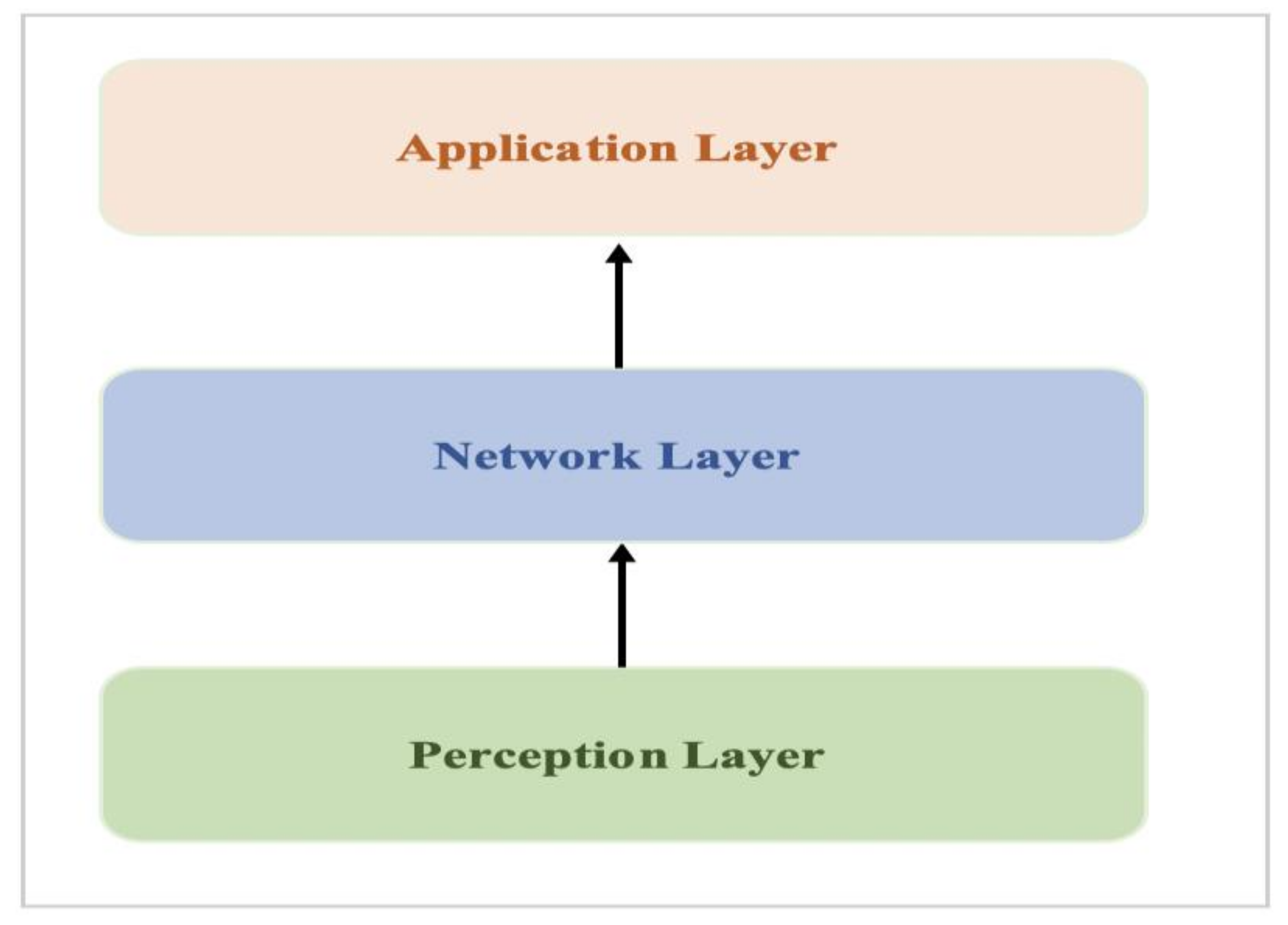Introduction
The rapid advancement of technology and the increasing reliance on digital infrastructure have brought about numerous benefits to society. However, with the expansion of the digital landscape, cybersecurity risks have also grown exponentially. Cyberattacks targeting individuals and businesses have become more sophisticated and prevalent, posing significant threats to sensitive data, financial stability, and national security.
In response to the escalating cybersecurity challenges, governments around the world have taken steps to establish comprehensive cybersecurity frameworks to protect their citizens and critical infrastructure. One such initiative is the Cybersecurity Act, which aims to address the emerging cyber threats and enhance the resilience of nations in the face of growing cyber risks.
The Cybersecurity Act is a legislative framework designed to provide a legal and regulatory framework for protecting digital systems, networks, and data from cyber threats. It encompasses a wide range of measures and guidelines to ensure the confidentiality, integrity, and availability of information in cyberspace.
The primary objective of the Cybersecurity Act is to establish a comprehensive and cohesive national cybersecurity strategy. It aims to strengthen the nation’s cyber defenses, promote collaboration between public and private sectors, and foster international cooperation in combating cyber threats. By implementing robust cybersecurity measures, the act seeks to safeguard critical infrastructure, sensitive information, and digital services.
Furthermore, the Cybersecurity Act aims to raise awareness about cyber risks and promote a culture of cybersecurity among individuals, businesses, and organizations. It encourages the adoption of best practices, such as strong password management, regular software updates, and employee training on cybersecurity awareness. By fostering a proactive approach to cybersecurity, the act intends to minimize the vulnerabilities that can be exploited by cybercriminals.
Overall, the Cybersecurity Act plays a crucial role in establishing a legal framework to bolster cybersecurity defenses and protect against cyber threats. It recognizes the ever-evolving nature of cybersecurity risks and seeks to evolve and adapt accordingly. In the following sections, we will delve deeper into the goals and objectives of the Cybersecurity Act, as well as its key provisions and implications for individuals and businesses alike.
Overview of Cybersecurity Act
The Cybersecurity Act represents a comprehensive legislative framework to address the evolving challenges posed by cyber threats. It outlines the key principles and strategies to protect critical infrastructures, information systems, and digital assets from cyberattacks. By understanding the basic features of the Cybersecurity Act, individuals and businesses can better navigate the complex landscape of cybersecurity regulations.
At its core, the Cybersecurity Act focuses on establishing a robust legal framework to govern the protection of digital infrastructure and data. It sets out guidelines and standards for cybersecurity practices, ensuring that organizations and individuals maintain a high level of security. By promoting the adoption of best practices, the act aims to create a secure environment in cyberspace.
One of the key aspects of the Cybersecurity Act is the emphasis on collaboration and information sharing between public and private entities. It encourages the establishment of partnerships to facilitate the exchange of threat intelligence and promote effective responses to cyber incidents. Such collaboration enables a more coordinated approach to cybersecurity, enhancing the overall resilience of the interconnected digital ecosystem.
Moreover, the act introduces measures to strengthen the cybersecurity workforce. It recognizes the need for skilled professionals in addressing cyber threats and encourages the development of cybersecurity education and training programs. By enhancing the capabilities of the cybersecurity workforce, the act aims to bridge the skills gap and ensure that organizations have the necessary expertise to safeguard their systems and data.
Another important aspect of the Cybersecurity Act is the establishment of regulatory authority and enforcement mechanisms. It outlines the roles and responsibilities of government agencies in overseeing cybersecurity compliance and enforcement. By enforcing strict regulations and penalties for non-compliance, the act strives to create a strong deterrent against cybercrime and promote accountability.
Furthermore, the act places great importance on incident response and recovery. It outlines procedures for reporting cyber incidents and establishes protocols for organizations to follow in the event of a cybersecurity breach. By implementing effective incident response plans, the act seeks to minimize the impact of cyberattacks and facilitate a swift recovery process.
In summary, the Cybersecurity Act serves as a comprehensive guide for individuals and businesses in ensuring the security of their digital assets. It emphasizes collaboration, regulatory compliance, and incident response, highlighting the need for a proactive and holistic approach to cybersecurity. By understanding the overview of the Cybersecurity Act, stakeholders can navigate the ever-changing cybersecurity landscape and contribute to a safer digital environment.
Goals and Objectives of the Cybersecurity Act
The Cybersecurity Act has a clear set of goals and objectives aimed at addressing the rising cybersecurity threats and ensuring the safety and resilience of digital ecosystems. These goals and objectives guide the development and implementation of comprehensive cybersecurity strategies and measures. By understanding the goals and objectives of the Cybersecurity Act, individuals and organizations can better align their cybersecurity practices with its provisions.
One of the primary goals of the Cybersecurity Act is to establish a secure and resilient digital infrastructure. This includes protecting critical infrastructures, such as power grids, transportation systems, and financial networks, from cyber threats. By implementing stringent security measures and guidelines, the act aims to minimize vulnerabilities and mitigate the potential impact of cyberattacks on these vital systems.
Another objective of the Cybersecurity Act is to promote information sharing and collaboration between government agencies, private sector entities, and international partners. The act recognizes that cybersecurity is a collective effort and emphasizes the importance of sharing threat intelligence and best practices. By fostering collaboration, the act aims to enhance the overall cybersecurity capabilities and responses within and across borders.
The Cybersecurity Act also aims to raise public awareness and promote a culture of cybersecurity. It recognizes that individuals play a crucial role in maintaining the security of digital systems and data. The act encourages the adoption of best cybersecurity practices at the individual level, such as using strong passwords, being cautious of phishing scams, and keeping software up to date. By educating and empowering individuals, the act seeks to create a more resilient society in the face of cyber threats.
Additionally, the act aims to enhance the cybersecurity workforce by promoting education and training programs. It recognizes the need for skilled professionals to effectively address emerging cyber threats. By expanding educational opportunities and providing professional development resources, the act seeks to cultivate a proficient cybersecurity workforce capable of countering evolving cyber risks.
Furthermore, the Cybersecurity Act endeavors to establish a legal framework that ensures compliance with cybersecurity regulations. This includes imposing penalties for non-compliance and establishing regulatory authorities responsible for oversight. By enforcing compliance, the act aims to create a culture of accountability and deter cybercriminals from targeting vulnerable systems.
Overall, the goals and objectives of the Cybersecurity Act focus on building a secure and resilient digital landscape. The act aims to establish collaborative partnerships, promote awareness and education, and enforce compliance to protect vital digital infrastructures and mitigate the impact of cyber threats. By working towards these goals and objectives, stakeholders can contribute to a safer and more secure cyberspace for individuals, businesses, and nations as a whole.
Key Provisions of the Cybersecurity Act
The Cybersecurity Act encompasses several key provisions that outline the specific measures and guidelines for protecting digital infrastructure and data from cyber threats. These provisions play a crucial role in establishing a comprehensive cybersecurity framework and ensuring the resilience of nations in the face of evolving cyber risks. Exploring these key provisions provides valuable insights into the practical implications of the act.
One of the major provisions of the Cybersecurity Act is the establishment of mandatory cybersecurity standards and guidelines. These standards serve as a baseline for organizations to follow in order to ensure the security and integrity of their systems and data. They cover various aspects, including network security, access controls, incident response, and data protection. By implementing these standards, organizations can enhance their cybersecurity posture and minimize the risk of cyber incidents.
The act also emphasizes the importance of risk assessments and vulnerability management. It requires organizations to regularly assess and identify potential vulnerabilities in their digital infrastructure. This allows them to proactively address security weaknesses and apply necessary safeguards to protect against known threats. By conducting regular risk assessments, organizations can adapt their cybersecurity measures to emerging risks and ensure the ongoing effectiveness of their security practices.
Another key provision of the Cybersecurity Act is the requirement for incident reporting and information sharing. Organizations are obligated to report cyber incidents promptly, ensuring that relevant authorities can respond effectively and mitigate the impact of the attack. Additionally, the act encourages information sharing between public and private entities to enable a collective defense against cyber threats. By promoting information sharing, the act aims to enhance situational awareness and enable a more coordinated response to cyber incidents.
The act also places emphasis on the protection of personally identifiable information (PII) and sensitive data. It requires organizations to implement measures to safeguard PII, such as encryption and access controls. Additionally, it establishes guidelines for secure data handling and transfer, ensuring that sensitive information is protected from unauthorized access or disclosure. By prioritizing data protection, the act aims to safeguard individuals’ privacy and mitigate the risk of identity theft and other cybercrimes.
Furthermore, the Cybersecurity Act promotes the establishment of cybersecurity education and training programs. It emphasizes the importance of continuous learning and skills development to tackle evolving cyber threats. By supporting education initiatives, the act aims to cultivate a skilled cybersecurity workforce, equipped with the knowledge and expertise needed to protect digital systems and respond to emerging threats effectively.
In summary, the key provisions of the Cybersecurity Act revolve around establishing mandatory cybersecurity standards, conducting risk assessments, promoting incident reporting and information sharing, protecting sensitive data, and fostering cybersecurity education and training. These provisions serve as the foundation for a comprehensive cybersecurity framework and empower organizations and individuals to proactively address cyber threats and ensure the resilience of digital ecosystems.
Implications for Individuals and Businesses
The implementation of the Cybersecurity Act has significant implications for both individuals and businesses in their efforts to protect themselves against cyber threats. Understanding these implications is crucial in order to adapt to the evolving cybersecurity landscape and mitigate the risks associated with cyberattacks.
For individuals, the Cybersecurity Act emphasizes the importance of personal responsibility in maintaining a secure online presence. It encourages individuals to adopt strong security practices, such as using unique and complex passwords, enabling two-factor authentication, and being cautious of phishing attempts. By adhering to these best practices, individuals can reduce the likelihood of falling victim to cybercrimes and protect their personal information from unauthorized access.
The act also encourages individuals to stay updated on the latest cybersecurity risks and trends by participating in cybersecurity awareness programs and seeking educational resources. This knowledge empowers individuals to make informed decisions regarding the security of their digital devices, networks, and personal information. It enables them to identify potential threats and take appropriate actions to mitigate those risks effectively.
For businesses, the implications of the Cybersecurity Act are far-reaching. The act imposes regulatory requirements on businesses to ensure the protection of customer data and sensitive information. It necessitates the implementation of robust security measures, such as encryption, access controls, and regular security audits. By complying with these requirements, businesses can enhance their cybersecurity posture, build customer trust, and safeguard their reputation.
The act also emphasizes the importance of incident response plans for businesses. It encourages businesses to develop and implement strategies to detect, contain, and recover from cyber incidents effectively. This proactive approach minimizes the potential damage caused by cyberattacks and helps businesses bounce back swiftly, minimizing downtime and financial losses.
Additionally, the Cybersecurity Act promotes the establishment of public-private partnerships. It encourages businesses to collaborate with government agencies, sharing threat intelligence and best practices. By forging these partnerships, businesses can access valuable resources, benefit from collective defense strategies, and stay ahead of emerging cyber threats.
Another implication of the act for businesses is the need to invest in cybersecurity education and training for their employees. By equipping employees with the knowledge and skills to identify and respond to cyber threats, businesses can create a more resilient workforce. This training helps mitigate the risks associated with human error and ensures that employees can actively contribute to maintaining a secure digital environment.
In summary, the Cybersecurity Act has significant implications for both individuals and businesses. It underscores the importance of personal responsibility, cybersecurity awareness, and education for individuals, empowering them to protect their personal information and digital devices. For businesses, compliance with the act’s requirements strengthens their cybersecurity practices, enables effective incident response, and fosters collaboration with government agencies. By understanding and adapting to these implications, individuals and businesses can navigate the complex cybersecurity landscape and mitigate the risks posed by cyber threats.
Support and Opposition to the Cybersecurity Act
The Cybersecurity Act has garnered both support and opposition from various stakeholders, reflecting differing perspectives on its effectiveness and implications. Understanding the arguments put forth by proponents and critics helps to shed light on the debates surrounding the act and its potential impact on the digital landscape.
Supporters of the Cybersecurity Act argue that it provides a much-needed legal framework to combat the growing threat of cyberattacks. They contend that the act’s provisions promote collaboration between public and private entities, enhance information sharing, and encourage proactive measures to strengthen cybersecurity defenses. Supporters believe that a unified and coordinated approach to cybersecurity is essential in protecting critical infrastructure and sensitive data from sophisticated cyber threats.
Furthermore, proponents argue that the Cybersecurity Act helps raise public awareness about the importance of cybersecurity. They believe that by educating individuals and businesses about cyber risks and best practices, the act empowers them to take proactive measures to safeguard their digital assets. Supporters also highlight the act’s focus on establishing a skilled cybersecurity workforce through training initiatives, which they believe will contribute to the overall resilience of the digital ecosystem.
On the other hand, some critics express concerns about the potential impact of the Cybersecurity Act on individual privacy and civil liberties. They argue that the act’s provisions could allow for increased surveillance and data collection, potentially infringing upon individuals’ rights to privacy. Critics fear that the act’s broad definitions of cyber threats and corresponding enforcement measures could lead to overreach and abuse of power by government agencies.
Opponents also raise concerns about the financial burden imposed on businesses to comply with the act’s requirements. They argue that the costs associated with implementing robust cybersecurity measures and conducting regular risk assessments could disproportionately affect small and medium-sized enterprises. Critics contend that such financial burdens could hinder innovation and economic growth, particularly for startups and emerging businesses.
Additionally, critics express skepticism about the efficacy of the act’s regulatory framework in addressing the rapidly evolving nature of cyber threats. They argue that prescriptive regulations may not be able to keep pace with the constantly changing tactics employed by cybercriminals. Some opponents advocate for a more flexible approach that encourages innovation and adapts to emerging cyber risks.
Despite these opposing viewpoints, there is a general consensus among both supporters and critics that cybersecurity is of paramount importance in today’s digital landscape. While supporters believe that the Cybersecurity Act provides a solid foundation for strengthening cybersecurity defenses, opponents call for careful consideration of the potential impact on privacy and economic factors.
In summary, the Cybersecurity Act has engendered both support and opposition. Proponents emphasize the act’s contributions to enhancing cybersecurity, raising awareness, and fostering collaboration, while critics express concerns about potential privacy infringements and financial burdens. It is important to evaluate these arguments and engage in constructive dialogue to strike a balance between security, privacy, and innovation in the digital sphere.
Conclusion
The Cybersecurity Act represents a crucial step toward addressing the escalating cyber threats in today’s digital landscape. It provides a comprehensive legal and regulatory framework to protect critical infrastructure, sensitive data, and digital systems from cyberattacks. By establishing mandatory cybersecurity standards, promoting collaboration, and fostering a culture of cybersecurity, the act aims to enhance the resilience of individuals, businesses, and nations as a whole.
The act’s goals and objectives revolve around establishing secure digital infrastructure, promoting information sharing, raising awareness, and enhancing the cybersecurity workforce. These elements are crucial in ensuring the effectiveness of cybersecurity measures and minimizing the risks posed by cyber threats. Moreover, the act’s key provisions encompass various aspects, such as mandatory cybersecurity standards, incident response protocols, data protection guidelines, and collaboration frameworks, which collectively contribute to building a comprehensive cybersecurity framework.
However, it is important to acknowledge the differing perspectives surrounding the act. While supporters applaud its provisions for strengthening cybersecurity defenses and promoting collaboration, critics express concerns about potential privacy infringements, financial burdens, and the efficacy of regulatory frameworks. These viewpoints highlight the need for ongoing dialogue, ensuring that the act is continuously evaluated and refined to strike a balance between security, privacy, and economic factors.
In conclusion, the implementation of the Cybersecurity Act is a significant step toward mitigating the growing cyber risks faced by individuals, businesses, and nations. It provides a comprehensive framework to address cyber threats, enhance cybersecurity practices, and promote collaboration. With continued efforts in raising awareness, cultivating a skilled cybersecurity workforce, and balancing the concerns of privacy and innovation, the act contributes to creating a safer and more secure digital environment for all stakeholders involved.

























